
TRACE
[Preprint] TRACE: Temporal Grounding Video LLM via Casual Event Modeling
Stars: 54
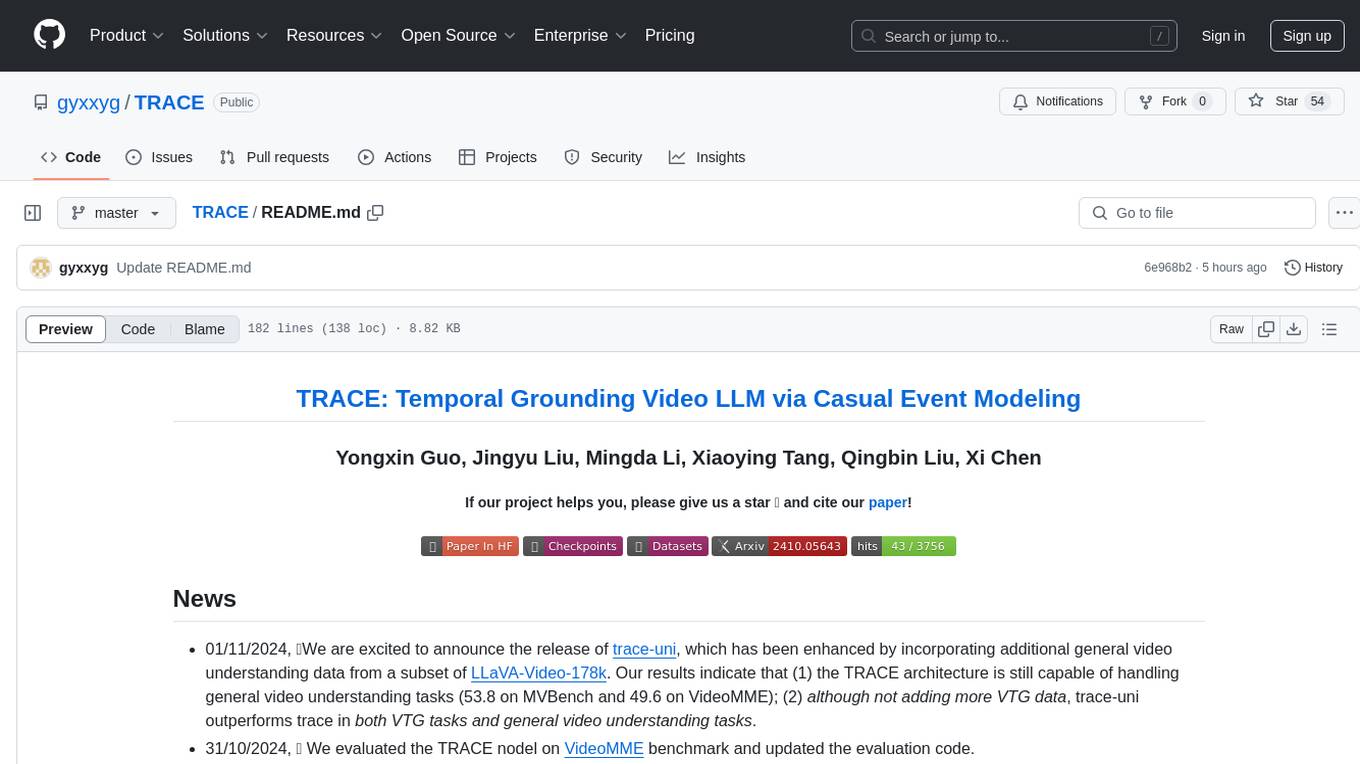
TRACE is a temporal grounding video model that utilizes causal event modeling to capture videos' inherent structure. It presents a task-interleaved video LLM model tailored for sequential encoding/decoding of timestamps, salient scores, and textual captions. The project includes various model checkpoints for different stages and fine-tuning on specific datasets. It provides evaluation codes for different tasks like VTG, MVBench, and VideoMME. The repository also offers annotation files and links to raw videos preparation projects. Users can train the model on different tasks and evaluate the performance based on metrics like CIDER, METEOR, SODA_c, F1, mAP, Hit@1, etc. TRACE has been enhanced with trace-retrieval and trace-uni models, showing improved performance on dense video captioning and general video understanding tasks.
README:
If our project helps you, please give us a star ⭐ and cite our paper!
- 01/11/2024, 🔥We are excited to announce the release of trace-uni, which has been enhanced by incorporating additional general video understanding data from a subset of LLaVA-Video-178k. Our results indicate that (1) the TRACE architecture is still capable of handling general video understanding tasks (53.8 on MVBench and 49.6 on VideoMME); (2) although not adding more VTG data, trace-uni outperforms trace in both VTG tasks and general video understanding tasks.
- 31/10/2024, 🔥 We evaluated the TRACE nodel on VideoMME benchmark and updated the evaluation code.
- 25/10/2024, 🔥 We evaluated the TRACE model on the MVBench benchmark and updated the evaluation code accordingly. Our findings indicate that, despite not being trained on extensive multi-task datasets, TRACE is still capable of effectively handling general QA tasks.
- 19/10/2024, 🔥 We release trace-retrieval by forcing the predicted timestamps to be align with the input frame timestamps. Results show trace-retrieval achieve better performance on dense video captioning tasks
- 10/10/2024, 🔥 Annotation files of training data are released!
- 10/10/2024, 🔥 Our model checkpoints and code are released!
TODO
- [x] Release the model checkpoints
- [x] Release the inference and evaluation code
- [x] Release the training and fine-tuning code
- [x] Release the training data
- [x] Release the TRACE-Retrieval, which outputs timestamps of input frames instead of predict unseen timestamps.
- [x] Train TRACE models on more tasks.
In this work
- We model the videos by a series of events, and propose causal event modeling framework to capture videos' inherent structure.
- We present a novel task-interleaved video LLM model, TRACE, tailored to implement the causal event modeling framework through the sequential encoding/decoding of timestamps, salient scores, and textual captions.
We use NPU environments for training and fine-tuning, and use V100 GPUs for evaluation. The environment we use can be found in npu-requirements and gpu-requirements.
| Checkpoints | Description | URL |
|---|---|---|
| Initialization | Weights initialized from VideoLLaMA2 | trace-init |
| Stage-1 | Model checkpoints trained after stage-1 | trace-stage1 |
| Stage-2 | Model checkpoints trained after stage-2 | trace |
| FT-Charades | Fine-tuned on Charades-STA dataset | trace-ft-charades |
| FT-Youcook2 | Fine-tuned on Youcook2 dataset | trace-ft-youcook2 |
| FT-QVHighlights | Fine-tuned on QVHighlights dataset | trace-ft-qvhighlights |
| TRACE-retrieval | Forcing the predicted timestamps to be align with input timestamps | trace-retrieval |
| TRACE-uni | Incorporating additional general video understanding data from a subset of LLaVA-Video-178k. | trace-uni |
Please make sure the model and video paths are correct before running the code.
- Inference codes are provided in inference.py.
- Evaluation codes are provided in trace/eval
- Evaluation of VTG tasks: Provided in eval/eval.sh.
- Evaluation of MVBench: Provided in eval/mvbench/eval.sh
- Evaluation of VideoMME: Provided in eval/videomme/eval.sh
We have provided the annotation files, and the raw videos can be prepared by the following projects
Stage 1 training
bash TRACE/scripts/train/pretrain-128.sh
Stage 2 training
bash TRACE/scripts/train/sft-128.sh
Fine-tune on downsteam task
bash TRACE/scripts/train/sft-youcook2.sh
Please config the data and model paths before running the scrips.
| Youcook2 (Zero-Shot) | CIDER | METEOR | SODA_c | F1 |
|---|---|---|---|---|
| TRACE | 8.1 | 2.8 | 2.2 | 22.4 |
| TRACE-retrieal | 8.3 | 2.9 | 2.3 | 24.1 |
| TRACE-uni | 8.6 | 2.9 | 2.3 | 22.4 |
| Charades-STA (Zero-Shot) | 0.3 | 0.5 | 0.7 | mIOU |
|---|---|---|---|---|
| TRACE | 58.6 | 40.3 | 19.4 | 38.7 |
| TRACE-retrieval | 57.9 | 37.4 | 17.3 | 37.4 |
| TRACE-uni | 63.7 | 43.7 | 21.0 | 41.5 |
| QVHighlights (Zero-Shot) | mAP | Hit@1 |
|---|---|---|
| TRACE | 26.8 | 42.7 |
| TRACE-retrieval | 27.9 | 44.3 |
| TRACE-uni | 27.5 | 43.9 |
| ActivityNet-DVC | CIDER | METEOR | SODA_c | F1 |
|---|---|---|---|---|
| TRACE | 25.9 | 6.0 | 6.4 | 39.3 |
| TRACE-retrieval | 25.7 | 5.9 | 6.5 | 40.1 |
| TRACE-uni | 29.2 | 6.9 | 6.4 | 40.4 |
| ActivityNet-MR | 0.3 | 0.5 | 0.7 | mIOU |
|---|---|---|---|---|
| TRACE | 54.0 | 37.7 | 24.0 | 39.0 |
| TRACE-retrieval | 54.4 | 39.8 | 24.9 | 40.2 |
| TRACE-uni | 53.2 | 38.2 | 24.7 | 39.4 |
| MVBench | Avg | AS | AP | AA | FA | UA | OE | OI | OS | MD | AL | ST | AC | MC | MA | SC | FP | CO | EN | ER | CI |
|---|---|---|---|---|---|---|---|---|---|---|---|---|---|---|---|---|---|---|---|---|---|
| TRACE | 48.1 | 61.2 | 56.5 | 72.5 | 46.5 | 61.0 | 48.0 | 69.5 | 40.0 | 22.0 | 31.0 | 86.5 | 37.5 | 37.0 | 51.0 | 45.0 | 40.5 | 39.0 | 31.0 | 43.5 | 44.5 |
| TRACE-uni | 53.8 | 68.1 | 58.5 | 72.5 | 41.5 | 73.5 | 55.1 | 71.5 | 40.5 | 25.0 | 53.0 | 88.5 | 63.5 | 38.5 | 51.0 | 52.5 | 49.0 | 59.5 | 33.5 | 49.5 | 32.5 |
| VideoMME (w/o subtitle) | Short | Midium | Long | Avg |
|---|---|---|---|---|
| TRACE | 49.5 | 42.5 | 39.3 | 43.8 |
| TRACE-uni | 58.2 | 48.1 | 42.3 | 49.6 |
We are grateful for the following awesome projects:
Contributors:
- Yongxin Guo
- Jingyu Liu
- Mingda Li
If you find this repository helpful for your project, please consider citing:
@misc{guo2024tracetemporalgroundingvideo,
title={TRACE: Temporal Grounding Video LLM via Causal Event Modeling},
author={Yongxin Guo and Jingyu Liu and Mingda Li and Xiaoying Tang and Qingbin Liu and Xi Chen},
year={2024},
eprint={2410.05643},
archivePrefix={arXiv},
primaryClass={cs.CV},
url={https://arxiv.org/abs/2410.05643},
}
For Tasks:
Click tags to check more tools for each tasksFor Jobs:
Alternative AI tools for TRACE
Similar Open Source Tools

TRACE
TRACE is a temporal grounding video model that utilizes causal event modeling to capture videos' inherent structure. It presents a task-interleaved video LLM model tailored for sequential encoding/decoding of timestamps, salient scores, and textual captions. The project includes various model checkpoints for different stages and fine-tuning on specific datasets. It provides evaluation codes for different tasks like VTG, MVBench, and VideoMME. The repository also offers annotation files and links to raw videos preparation projects. Users can train the model on different tasks and evaluate the performance based on metrics like CIDER, METEOR, SODA_c, F1, mAP, Hit@1, etc. TRACE has been enhanced with trace-retrieval and trace-uni models, showing improved performance on dense video captioning and general video understanding tasks.
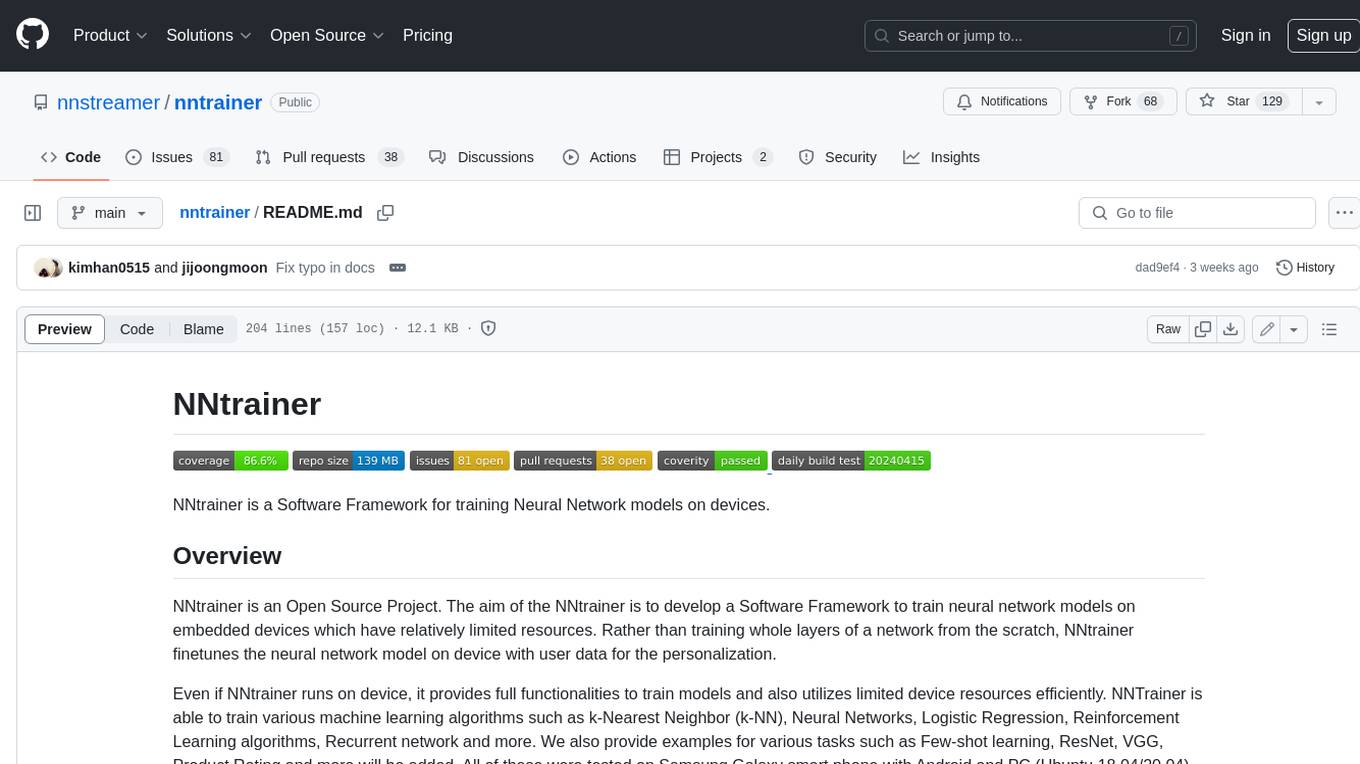
nntrainer
NNtrainer is a software framework for training neural network models on devices with limited resources. It enables on-device fine-tuning of neural networks using user data for personalization. NNtrainer supports various machine learning algorithms and provides examples for tasks such as few-shot learning, ResNet, VGG, and product rating. It is optimized for embedded devices and utilizes CBLAS and CUBLAS for accelerated calculations. NNtrainer is open source and released under the Apache License version 2.0.
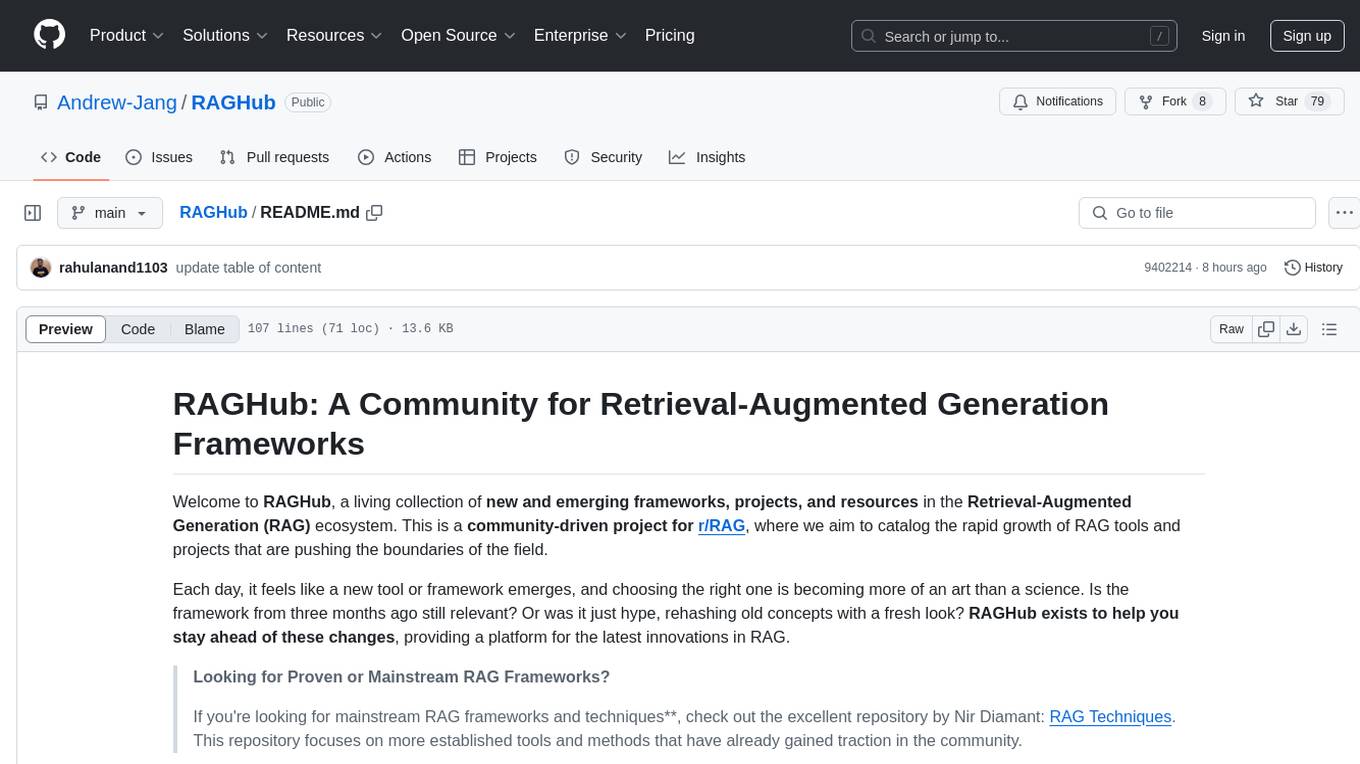
RAGHub
RAGHub is a community-driven project focused on cataloging new and emerging frameworks, projects, and resources in the Retrieval-Augmented Generation (RAG) ecosystem. It aims to help users stay ahead of changes in the field by providing a platform for the latest innovations in RAG. The repository includes information on RAG frameworks, evaluation frameworks, optimization frameworks, citation frameworks, engines, search reranker frameworks, projects, resources, and real-world use cases across industries and professions.
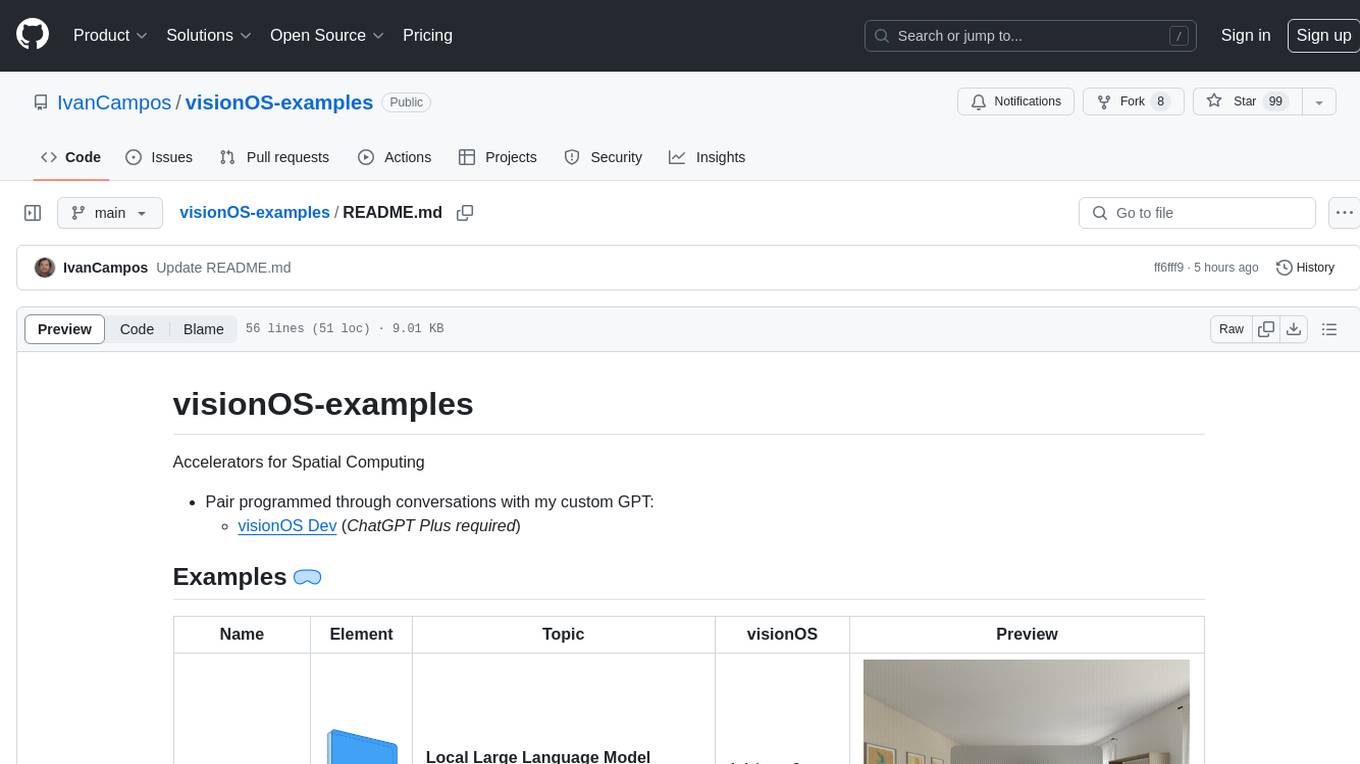
visionOS-examples
visionOS-examples is a repository containing accelerators for Spatial Computing. It includes examples such as Local Large Language Model, Chat Apple Vision Pro, WebSockets, Anchor To Head, Hand Tracking, Battery Life, Countdown, Plane Detection, Timer Vision, and PencilKit for visionOS. The repository showcases various functionalities and features for Apple Vision Pro, offering tools for developers to enhance their visionOS apps with capabilities like hand tracking, plane detection, and real-time cryptocurrency prices.
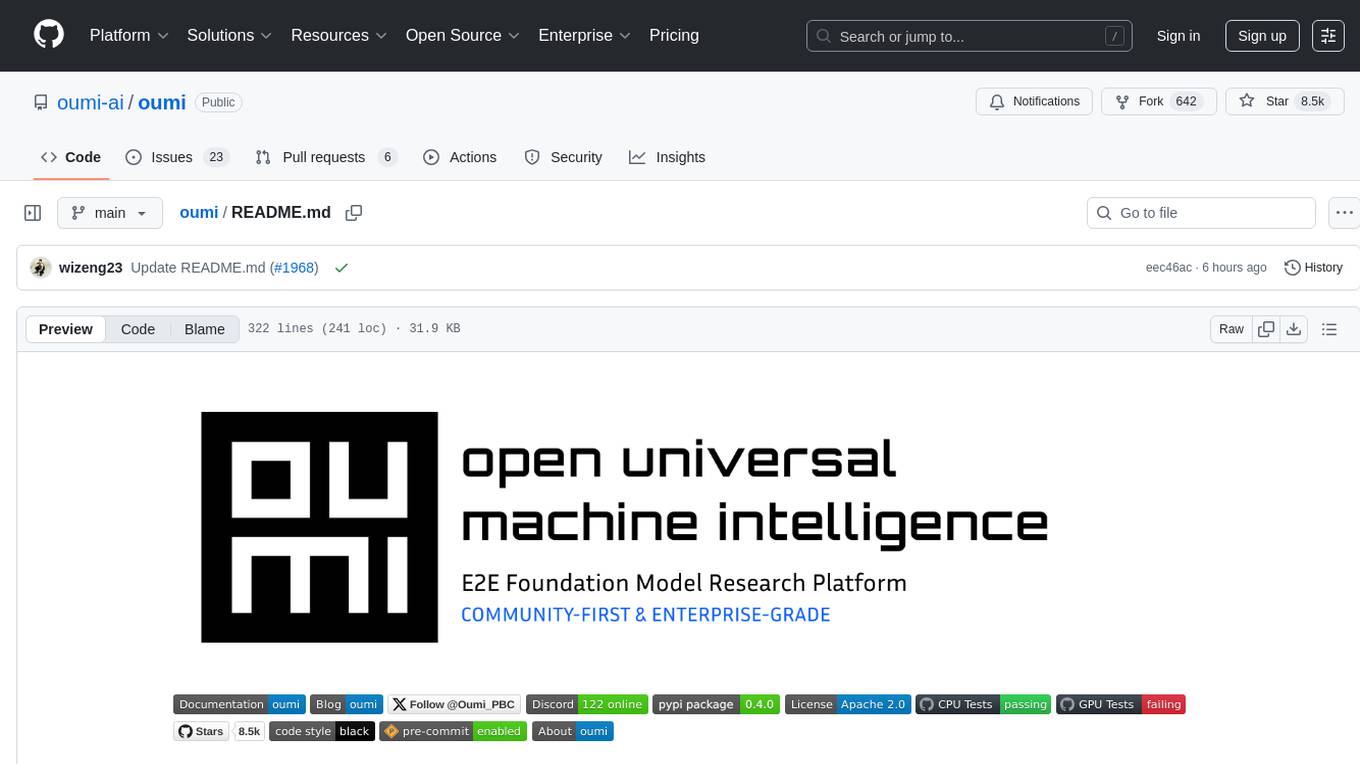
oumi
Oumi is an open-source platform for building state-of-the-art foundation models, offering tools for data preparation, training, evaluation, and deployment. It supports training and fine-tuning models with various parameters, working with text and multimodal models, synthesizing and curating training data, deploying models efficiently, evaluating models comprehensively, and running on different platforms. Oumi provides a consistent API, reliability, and flexibility for research purposes.
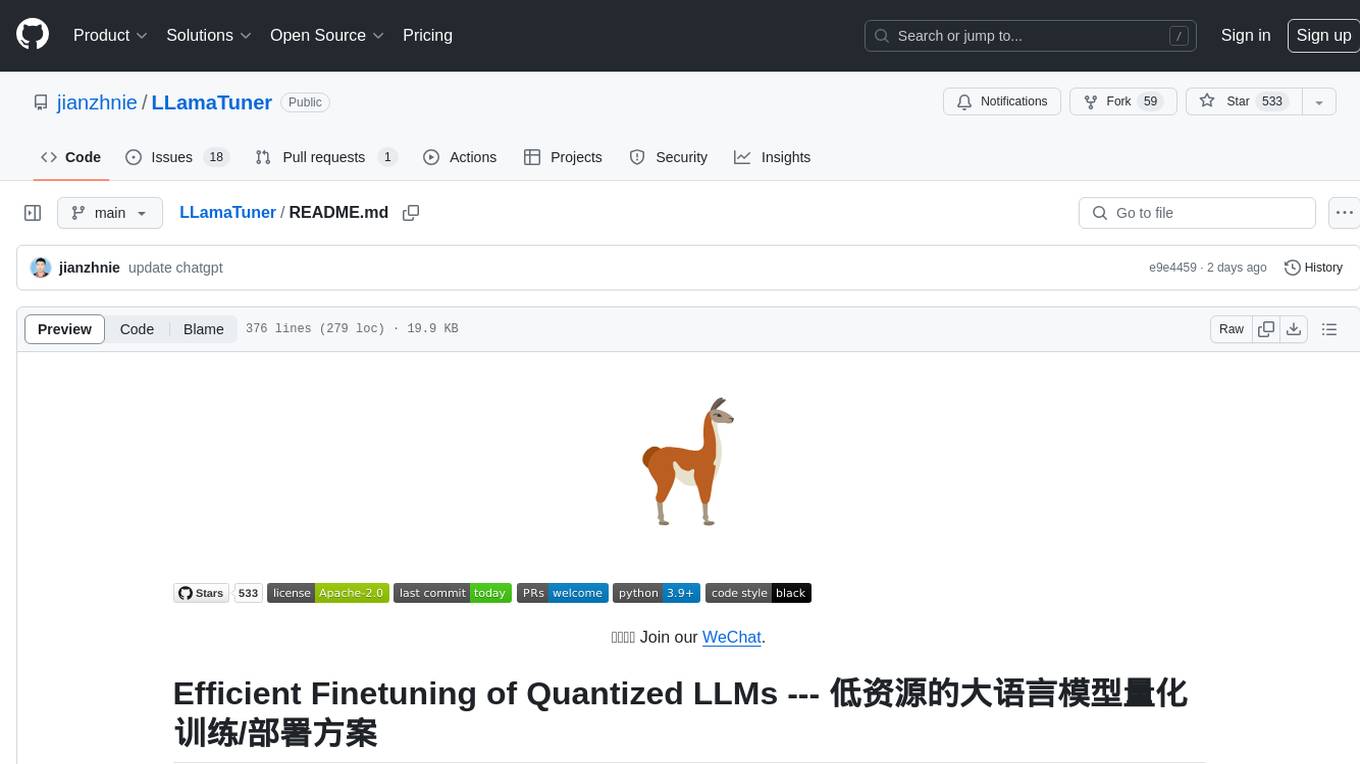
LLamaTuner
LLamaTuner is a repository for the Efficient Finetuning of Quantized LLMs project, focusing on building and sharing instruction-following Chinese baichuan-7b/LLaMA/Pythia/GLM model tuning methods. The project enables training on a single Nvidia RTX-2080TI and RTX-3090 for multi-round chatbot training. It utilizes bitsandbytes for quantization and is integrated with Huggingface's PEFT and transformers libraries. The repository supports various models, training approaches, and datasets for supervised fine-tuning, LoRA, QLoRA, and more. It also provides tools for data preprocessing and offers models in the Hugging Face model hub for inference and finetuning. The project is licensed under Apache 2.0 and acknowledges contributions from various open-source contributors.
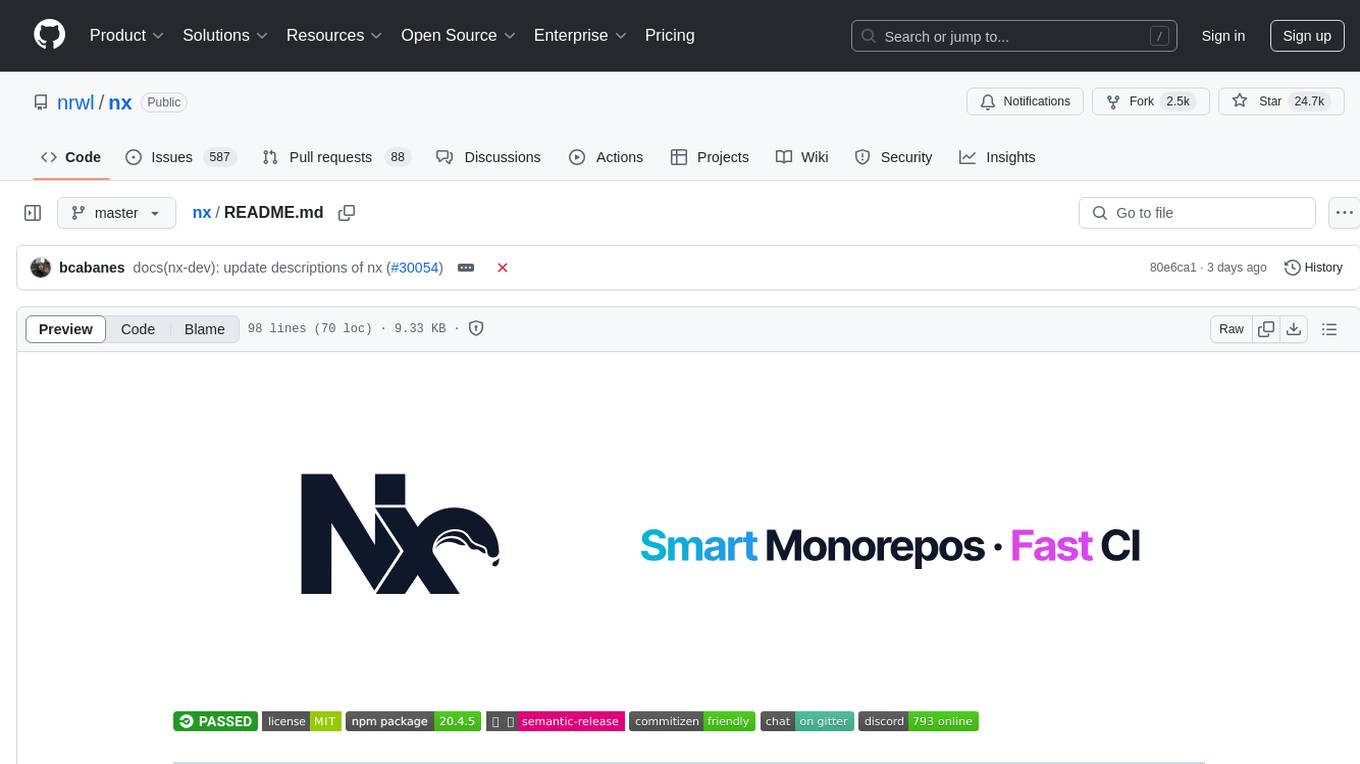
nx
Nx is a build system optimized for monorepos, featuring AI-powered architectural awareness and advanced CI capabilities. It provides faster task scheduling, caching, and more for existing workspaces. Nx Cloud enhances CI by offering remote caching, task distribution, automated e2e test splitting, and task flakiness detection. The tool aims to scale monorepos efficiently and improve developer productivity.
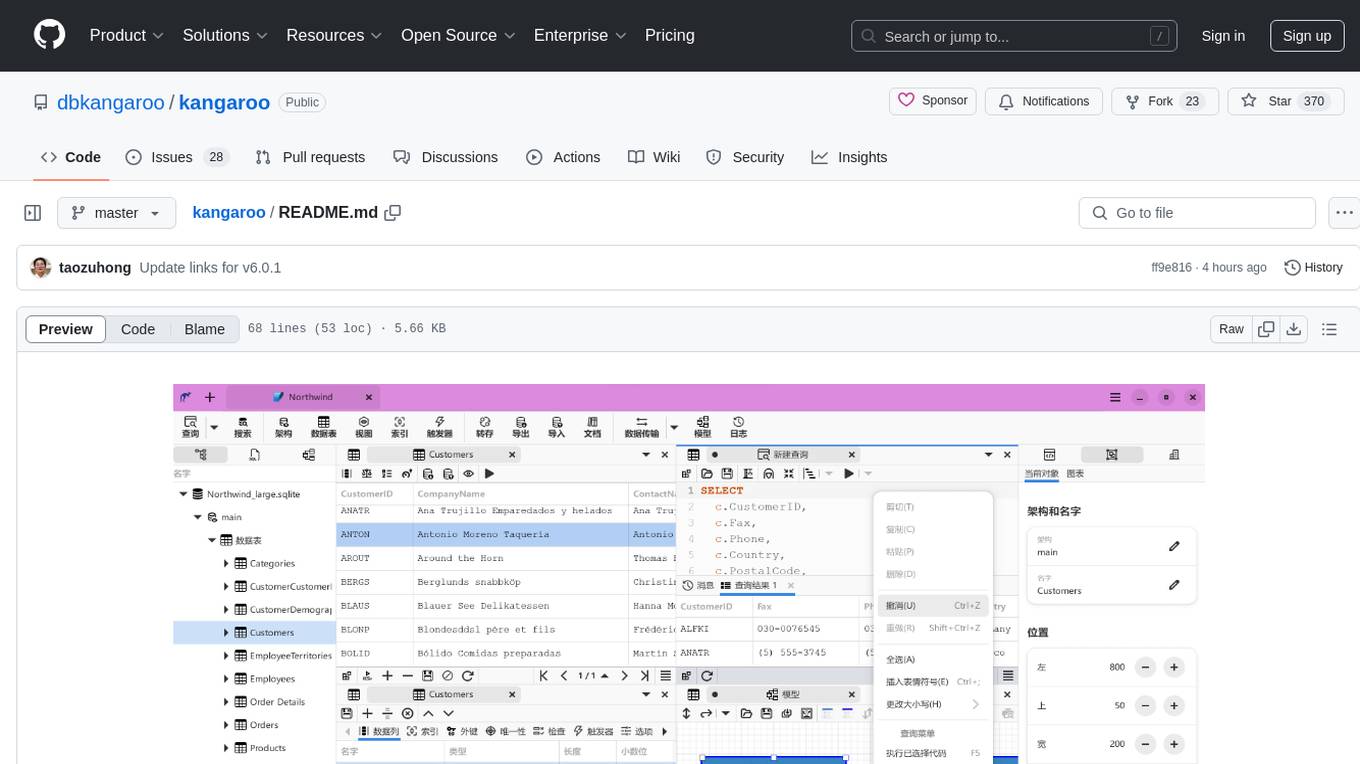
kangaroo
Kangaroo is an AI-powered SQL client and admin tool for popular databases like SQLite, MySQL, PostgreSQL, etc. It supports various functionalities such as table design, query, model, sync, export/import, and more. The tool is designed to be comfortable, fun, and developer-friendly, with features like code intellisense and autocomplete. Kangaroo aims to provide a seamless experience for database management across different operating systems.
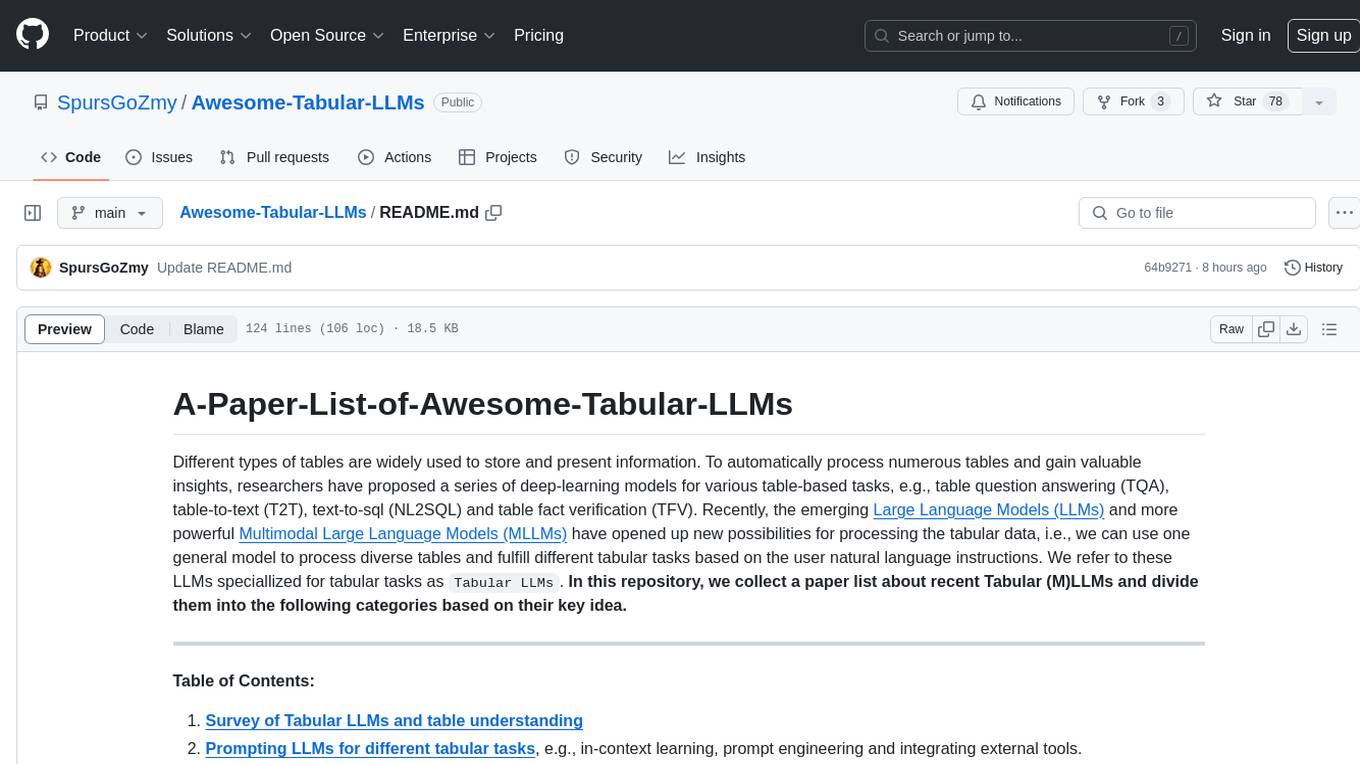
Awesome-Tabular-LLMs
This repository is a collection of papers on Tabular Large Language Models (LLMs) specialized for processing tabular data. It includes surveys, models, and applications related to table understanding tasks such as Table Question Answering, Table-to-Text, Text-to-SQL, and more. The repository categorizes the papers based on key ideas and provides insights into the advancements in using LLMs for processing diverse tables and fulfilling various tabular tasks based on natural language instructions.
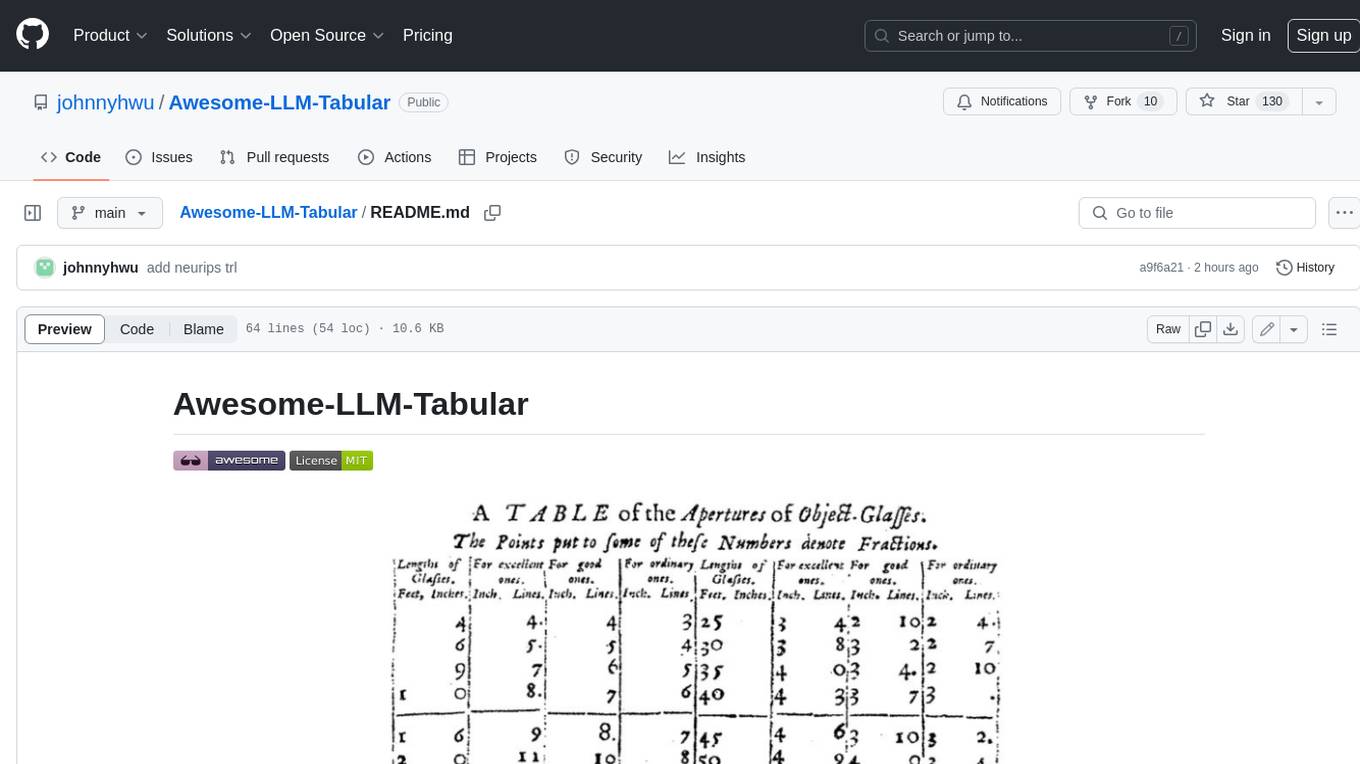
Awesome-LLM-Tabular
This repository is a curated list of research papers that explore the integration of Large Language Model (LLM) technology with tabular data. It aims to provide a comprehensive resource for researchers and practitioners interested in this emerging field. The repository includes papers on a wide range of topics, including table-to-text generation, table question answering, and tabular data classification. It also includes a section on related datasets and resources.
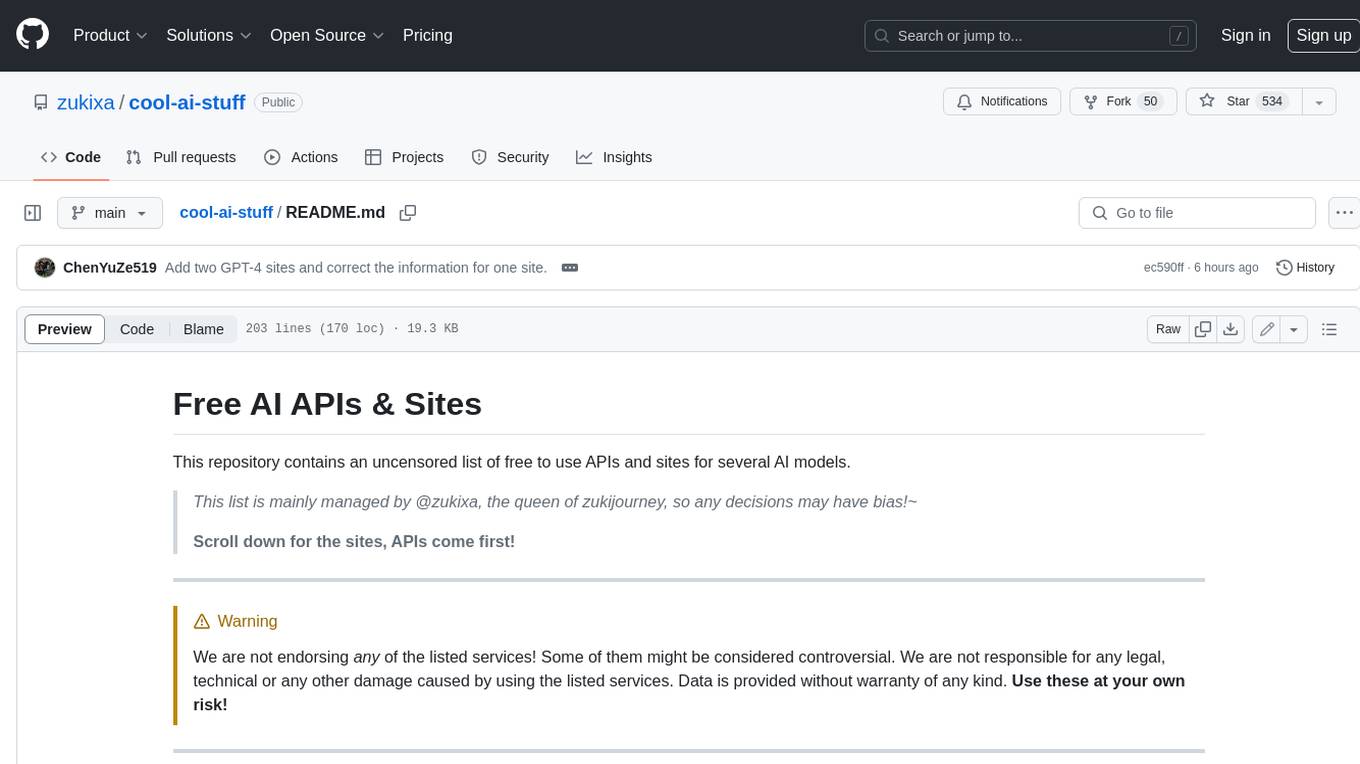
cool-ai-stuff
This repository contains an uncensored list of free to use APIs and sites for several AI models. > _This list is mainly managed by @zukixa, the queen of zukijourney, so any decisions may have bias!~_ > > **Scroll down for the sites, APIs come first!** * * * > [!WARNING] > We are not endorsing _any_ of the listed services! Some of them might be considered controversial. We are not responsible for any legal, technical or any other damage caused by using the listed services. Data is provided without warranty of any kind. **Use these at your own risk!** * * * # APIs Table of Contents #### Overview of Existing APIs #### Overview of Existing APIs -- Top LLM Models Available #### Overview of Existing APIs -- Top Image Models Available #### Overview of Existing APIs -- Top Other Features & Models Available #### Overview of Existing APIs -- Available Donator Perks * * * ## API List:* *: This list solely covers all providers I (@zukixa) was able to collect metrics in. Any mistakes are not my responsibility, as I am either banned, or not aware of x API. \ 1: Last Updated 4/14/24 ### Overview of APIs: | Service | # of Users1 | Link | Stablity | NSFW Ok? | Open Source? | Owner(s) | Other Notes | | ----------- | ---------- | ------------------------------------------ | ------------------------------------------ | --------------------------- | ------------------------------------------------------ | -------------------------- | ----------------------------------------------------------------------------------------------------------- | | zukijourney| 4441 | D | High | On /unf/, not /v1/ | ✅, Here | @zukixa | Largest & Oldest GPT-4 API still continuously around. Offers other popular AI-related Bots too. | | Hyzenberg| 1234 | D | High | Forbidden | ❌ | @thatlukinhasguy & @voidiii | Experimental sister API to Zukijourney. Successor to HentAI | | NagaAI | 2883 | D | High | Forbidden | ❌ | @zentixua | Honorary successor to ChimeraGPT, the largest API in history (15k users). | | WebRaftAI | 993 | D | High | Forbidden | ❌ | @ds_gamer | Largest API by model count. Provides a lot of service/hosting related stuff too. | | KrakenAI | 388 | D | High | Discouraged | ❌ | @paninico | It is an API of all time. | | ShuttleAI | 3585 | D | Medium | Generally Permitted | ❌ | @xtristan | Faked GPT-4 Before 1, 2 | | Mandrill | 931 | D | Medium | Enterprise-Tier-Only | ❌ | @fredipy | DALL-E-3 access pioneering API. Has some issues with speed & stability nowadays. | oxygen | 742 | D | Medium | Donator-Only | ❌ | @thesketchubuser | Bri'ish 🤮 & Fren'sh 🤮 | | Skailar | 399 | D | Medium | Forbidden | ❌ | @aquadraws | Service is the personification of the word 'feature creep'. Lots of things announced, not much operational. |
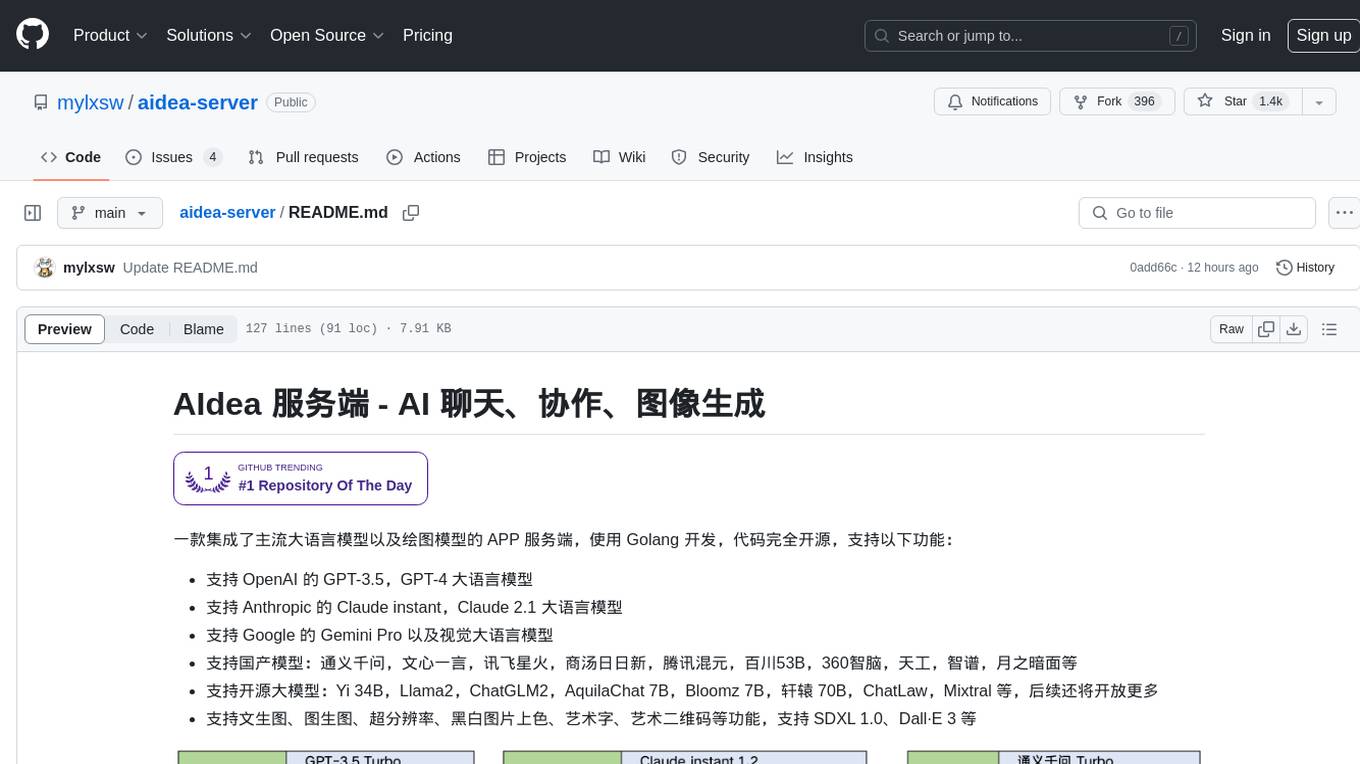
aidea-server
AIdea Server is an open-source Golang-based server that integrates mainstream large language models and drawing models. It supports various functionalities including OpenAI's GPT-3.5 and GPT-4, Anthropic's Claude instant and Claude 2.1, Google's Gemini Pro, as well as Chinese models like Tongyi Qianwen, Wenxin Yiyuan, and more. It also supports open-source large models like Yi 34B, Llama2, and AquilaChat 7B. Additionally, it provides features for text-to-image, super-resolution, coloring black and white images, generating art fonts and QR codes, among others.
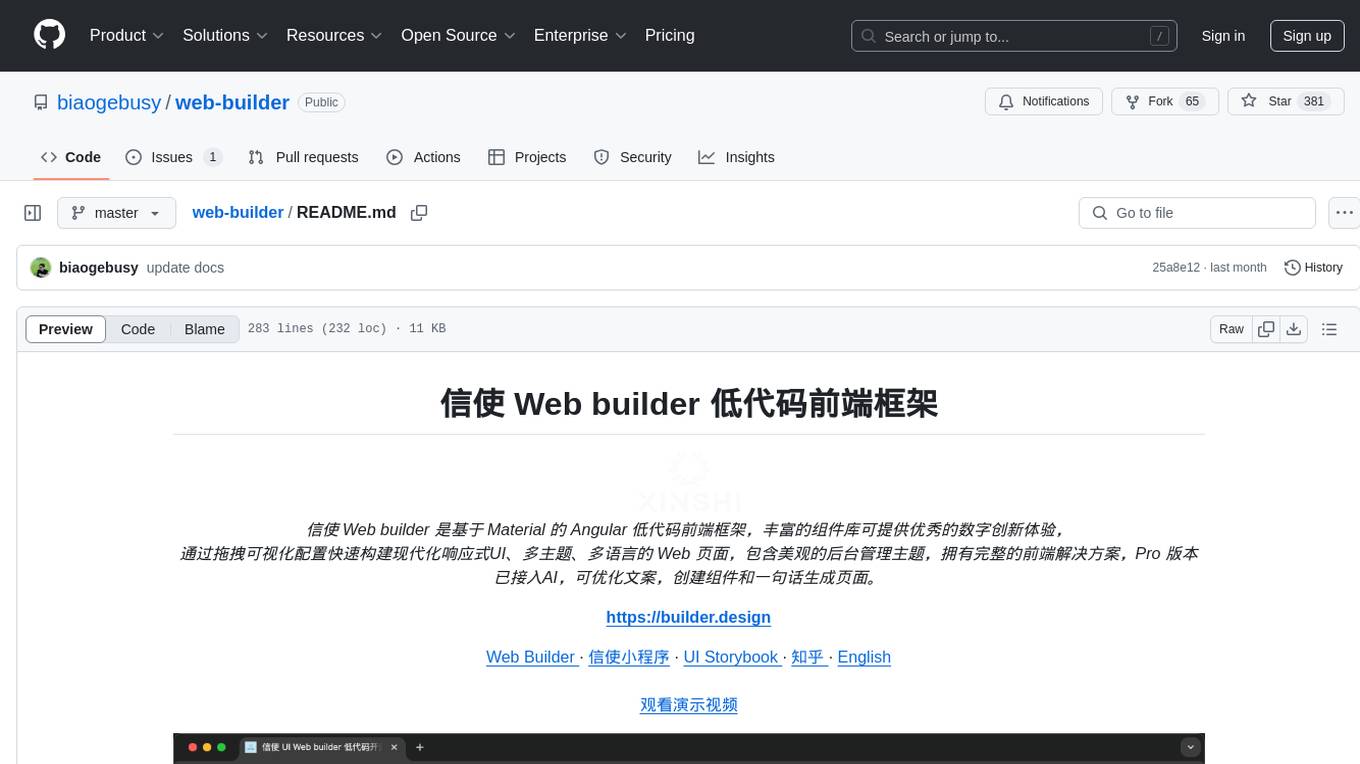
web-builder
Web Builder is a low-code front-end framework based on Material for Angular, offering a rich component library for excellent digital innovation experience. It allows rapid construction of modern responsive UI, multi-theme, multi-language web pages through drag-and-drop visual configuration. The framework includes a beautiful admin theme, complete front-end solutions, and AI integration in the Pro version for optimizing copy, creating components, and generating pages with a single sentence.
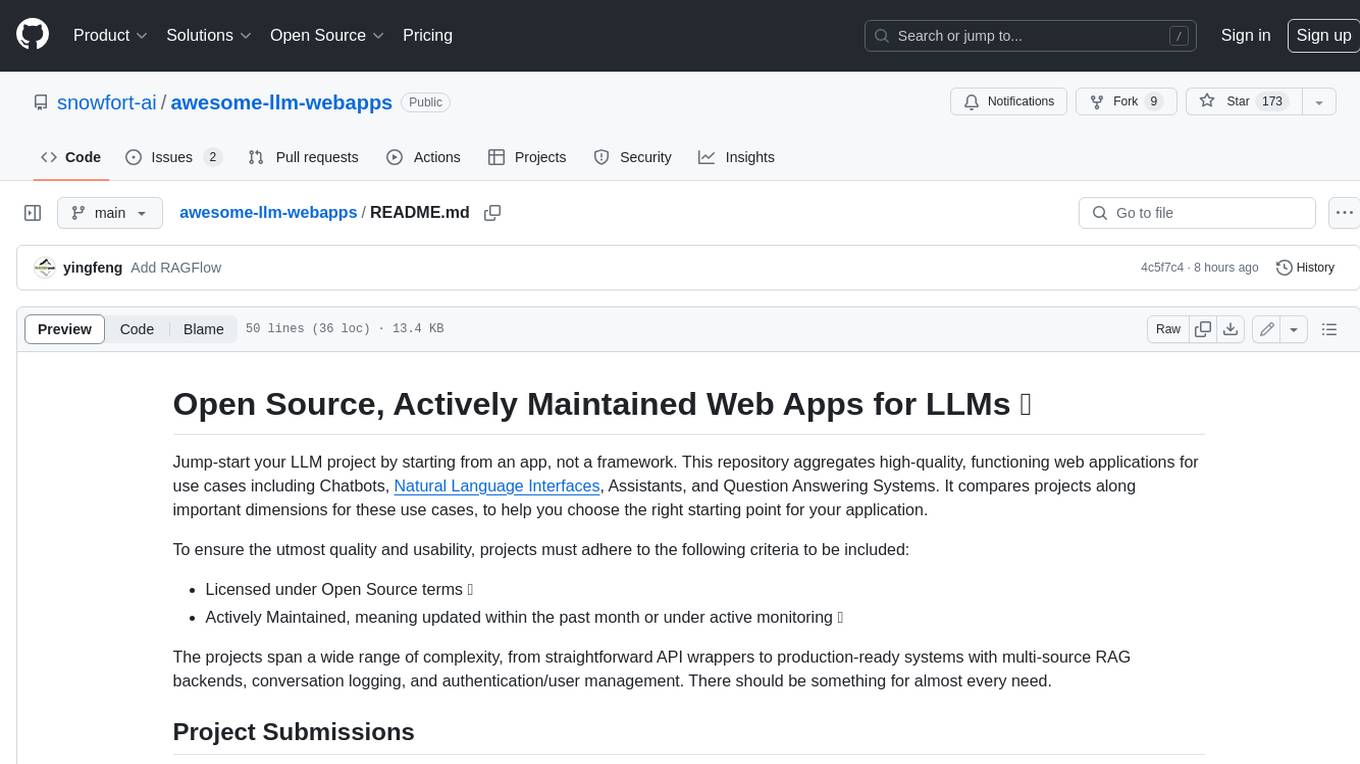
awesome-llm-webapps
This repository is a curated list of open-source, actively maintained web applications that leverage large language models (LLMs) for various use cases, including chatbots, natural language interfaces, assistants, and question answering systems. The projects are evaluated based on key criteria such as licensing, maintenance status, complexity, and features, to help users select the most suitable starting point for their LLM-based applications. The repository welcomes contributions and encourages users to submit projects that meet the criteria or suggest improvements to the existing list.
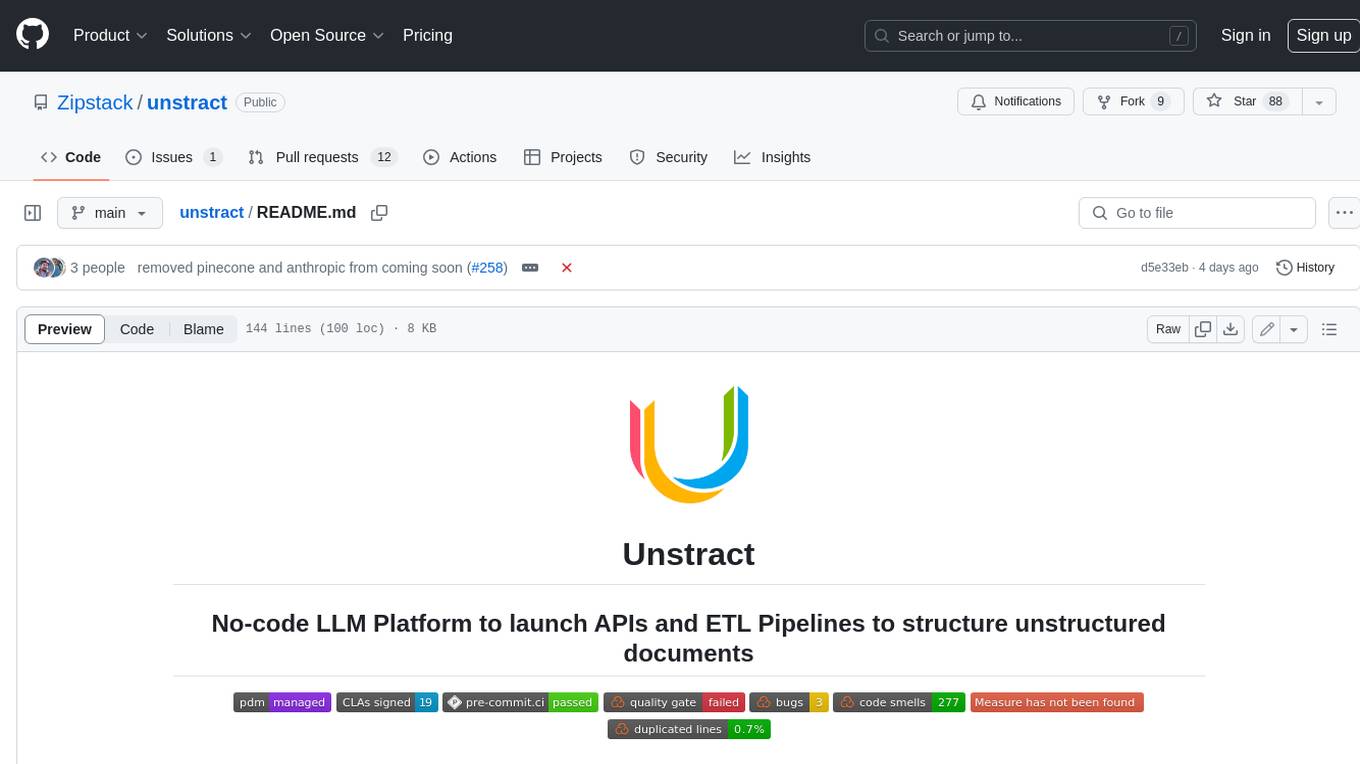
unstract
Unstract is a no-code platform that enables users to launch APIs and ETL pipelines to structure unstructured documents. With Unstract, users can go beyond co-pilots by enabling machine-to-machine automation. Unstract's Prompt Studio provides a simple, no-code approach to creating prompts for LLMs, vector databases, embedding models, and text extractors. Users can then configure Prompt Studio projects as API deployments or ETL pipelines to automate critical business processes that involve complex documents. Unstract supports a wide range of LLM providers, vector databases, embeddings, text extractors, ETL sources, and ETL destinations, providing users with the flexibility to choose the best tools for their needs.
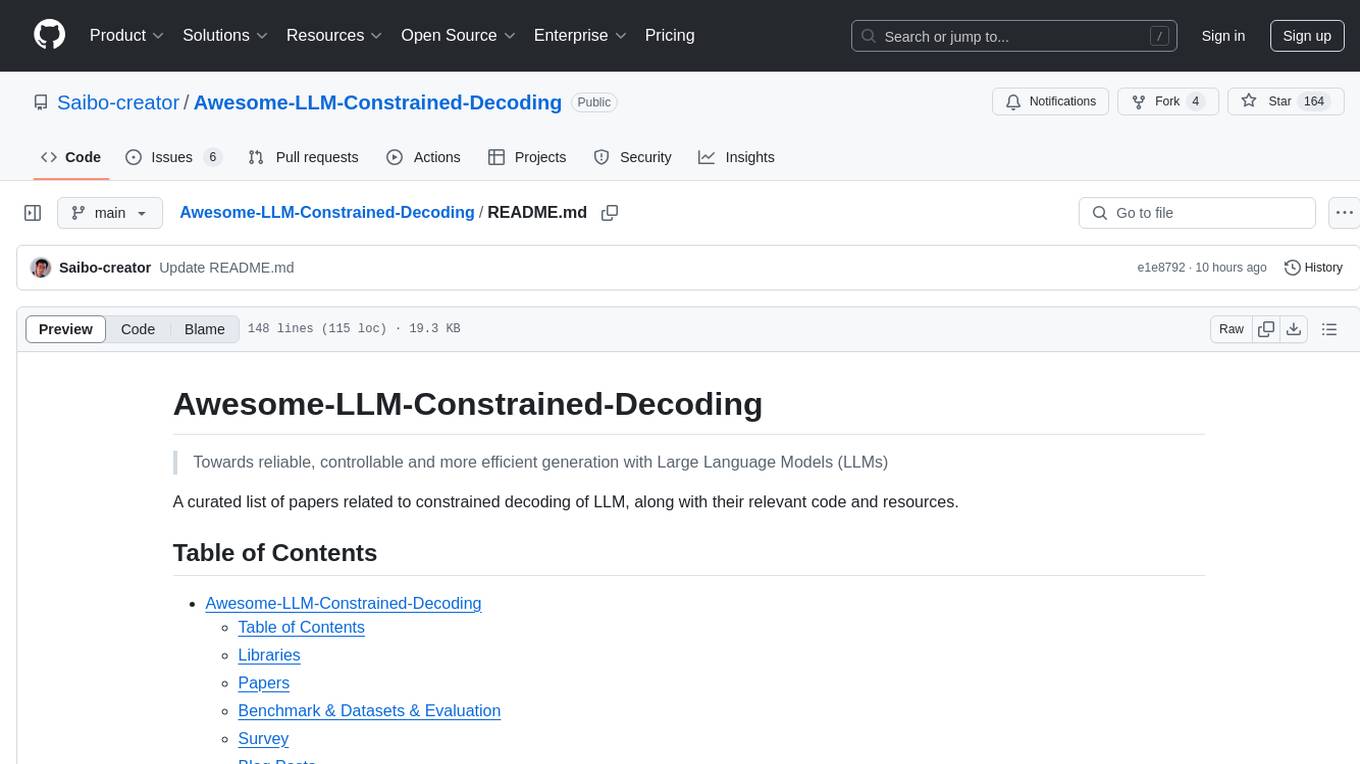
Awesome-LLM-Constrained-Decoding
Awesome-LLM-Constrained-Decoding is a curated list of papers, code, and resources related to constrained decoding of Large Language Models (LLMs). The repository aims to facilitate reliable, controllable, and efficient generation with LLMs by providing a comprehensive collection of materials in this domain.
For similar tasks
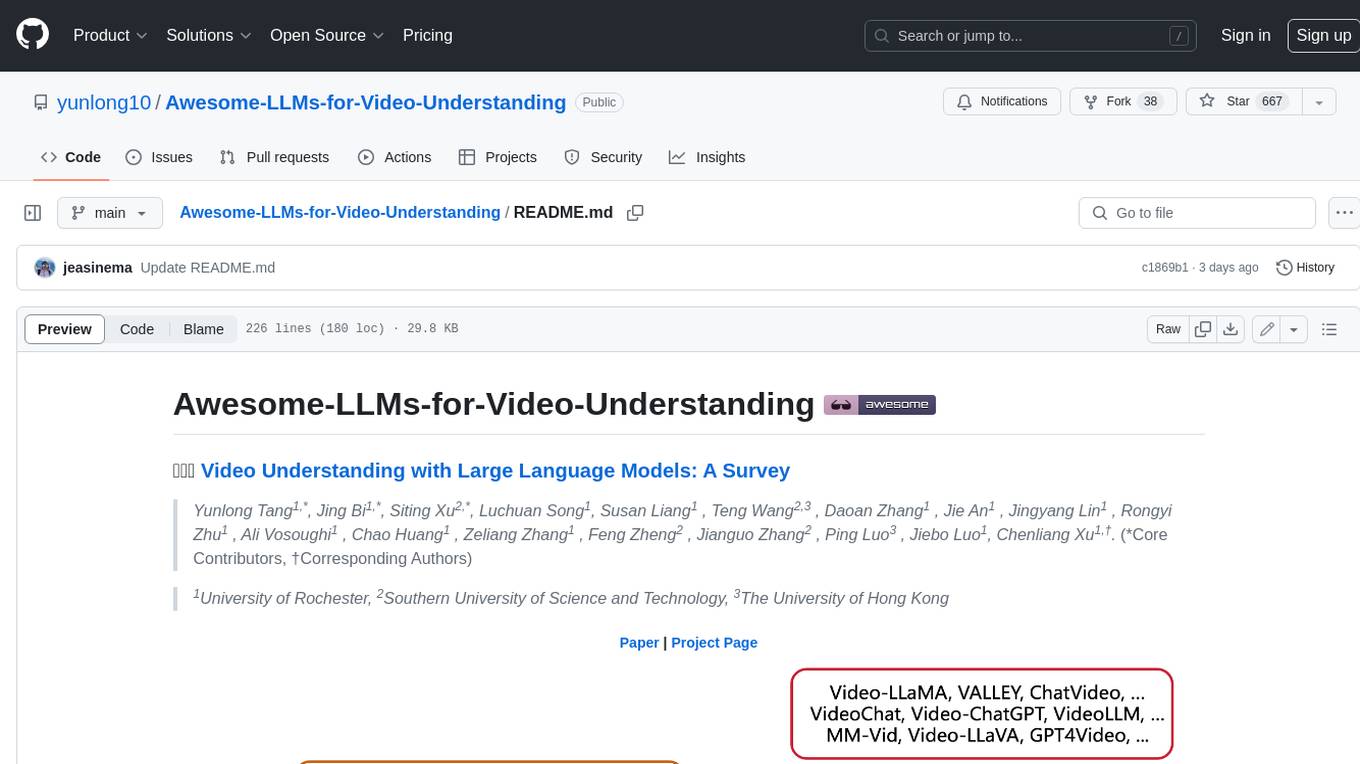
Awesome-LLMs-for-Video-Understanding
Awesome-LLMs-for-Video-Understanding is a repository dedicated to exploring Video Understanding with Large Language Models. It provides a comprehensive survey of the field, covering models, pretraining, instruction tuning, and hybrid methods. The repository also includes information on tasks, datasets, and benchmarks related to video understanding. Contributors are encouraged to add new papers, projects, and materials to enhance the repository.
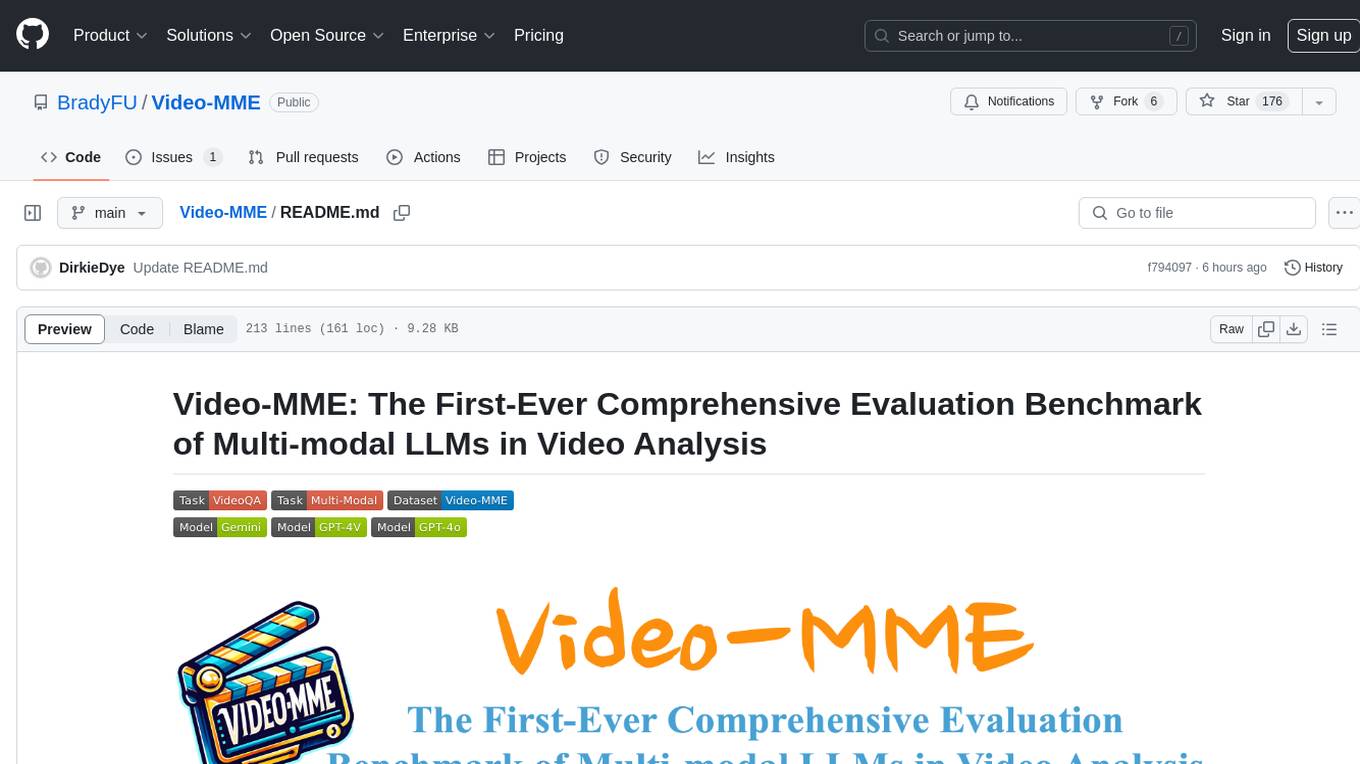
Video-MME
Video-MME is the first-ever comprehensive evaluation benchmark of Multi-modal Large Language Models (MLLMs) in Video Analysis. It assesses the capabilities of MLLMs in processing video data, covering a wide range of visual domains, temporal durations, and data modalities. The dataset comprises 900 videos with 256 hours and 2,700 human-annotated question-answer pairs. It distinguishes itself through features like duration variety, diversity in video types, breadth in data modalities, and quality in annotations.
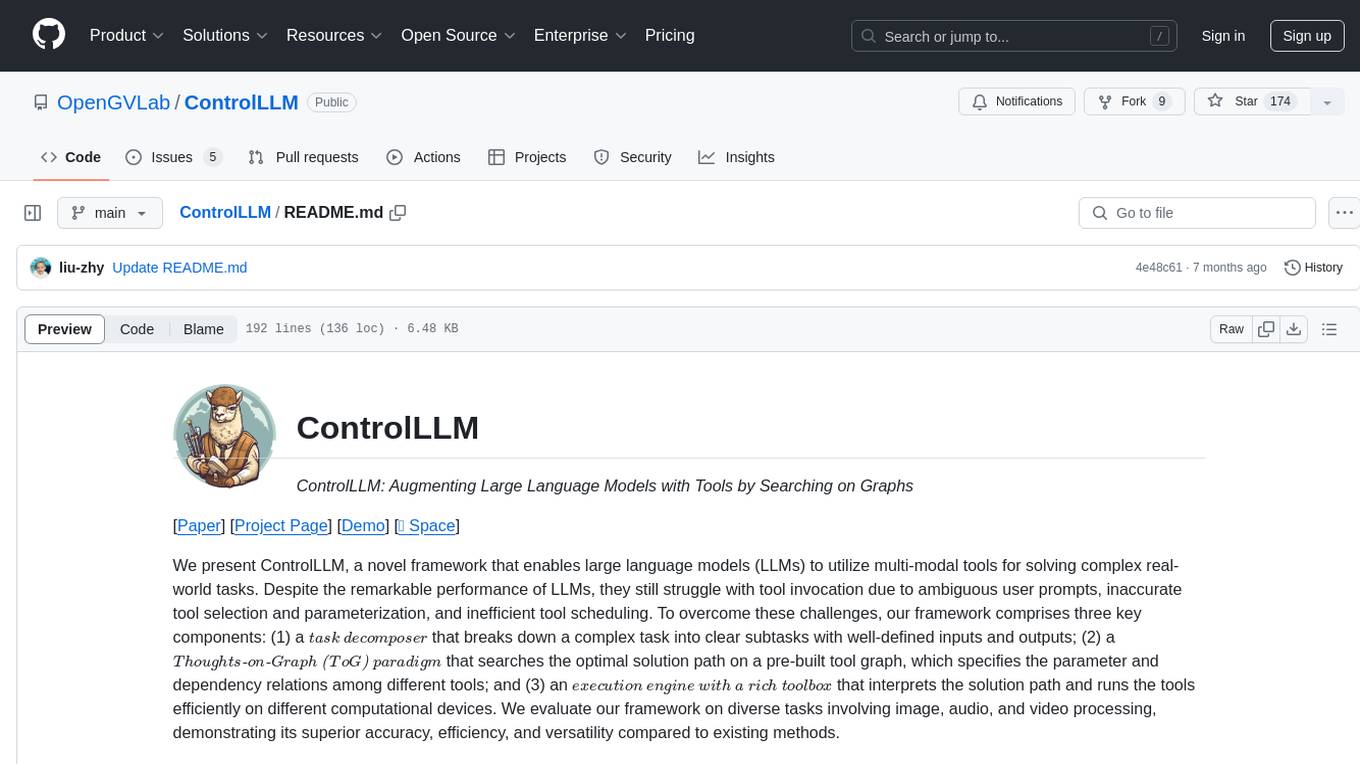
ControlLLM
ControlLLM is a framework that empowers large language models to leverage multi-modal tools for solving complex real-world tasks. It addresses challenges like ambiguous user prompts, inaccurate tool selection, and inefficient tool scheduling by utilizing a task decomposer, a Thoughts-on-Graph paradigm, and an execution engine with a rich toolbox. The framework excels in tasks involving image, audio, and video processing, showcasing superior accuracy, efficiency, and versatility compared to existing methods.
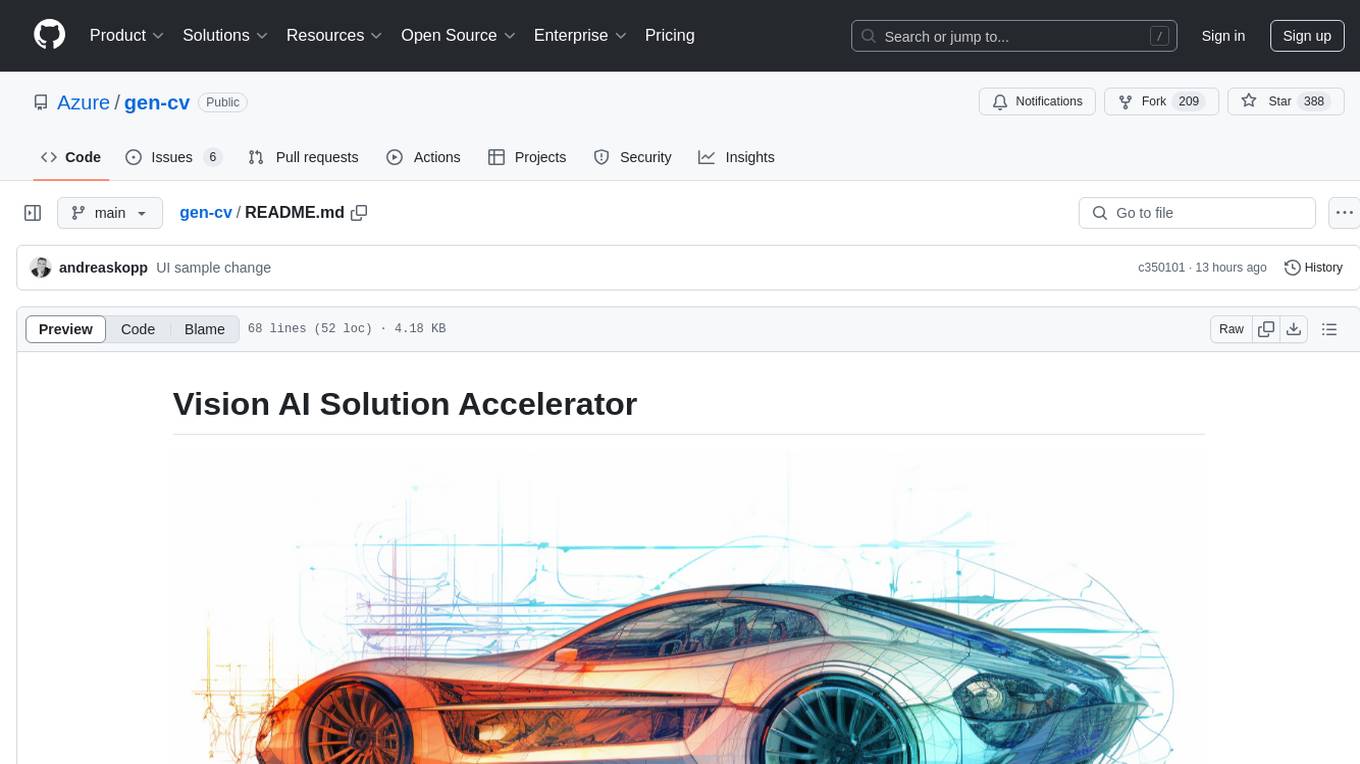
gen-cv
This repository is a rich resource offering examples of synthetic image generation, manipulation, and reasoning using Azure Machine Learning, Computer Vision, OpenAI, and open-source frameworks like Stable Diffusion. It provides practical insights into image processing applications, including content generation, video analysis, avatar creation, and image manipulation with various tools and APIs.
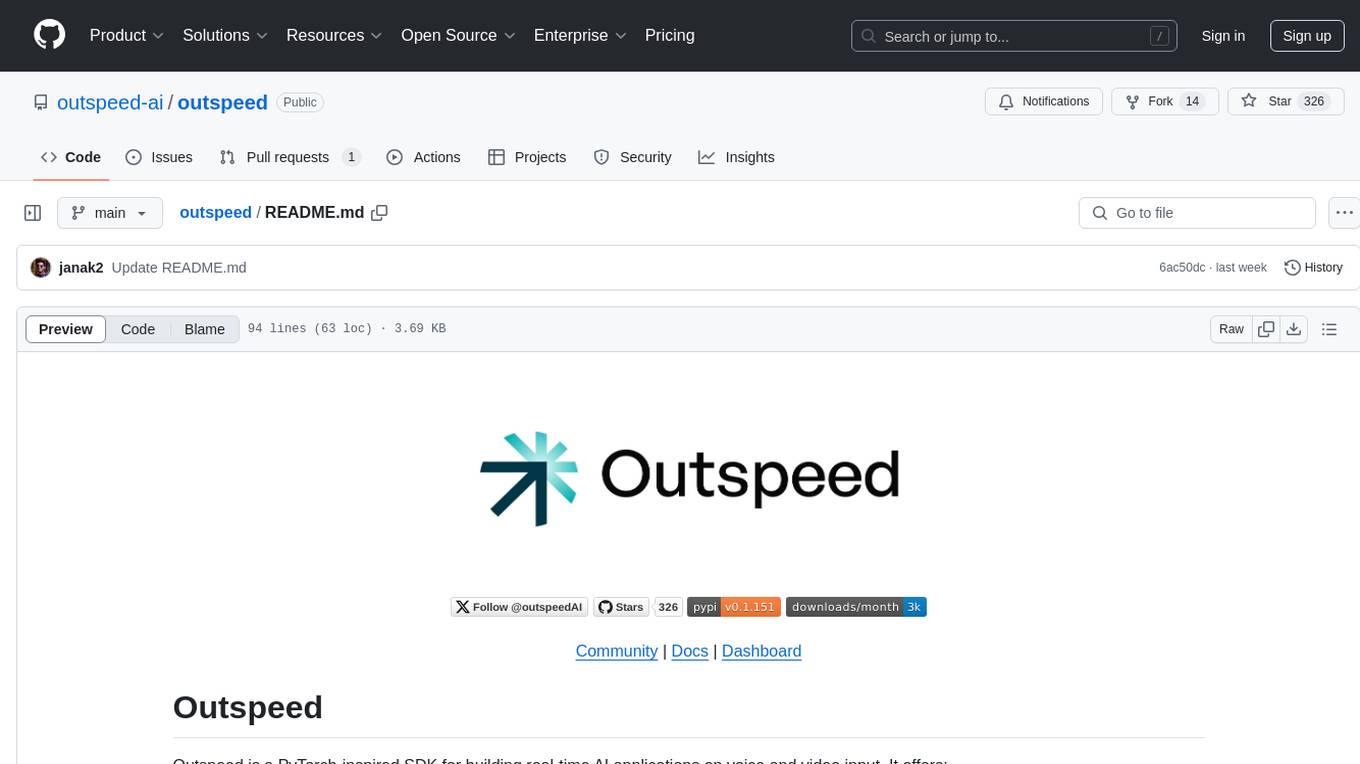
outspeed
Outspeed is a PyTorch-inspired SDK for building real-time AI applications on voice and video input. It offers low-latency processing of streaming audio and video, an intuitive API familiar to PyTorch users, flexible integration of custom AI models, and tools for data preprocessing and model deployment. Ideal for developing voice assistants, video analytics, and other real-time AI applications processing audio-visual data.
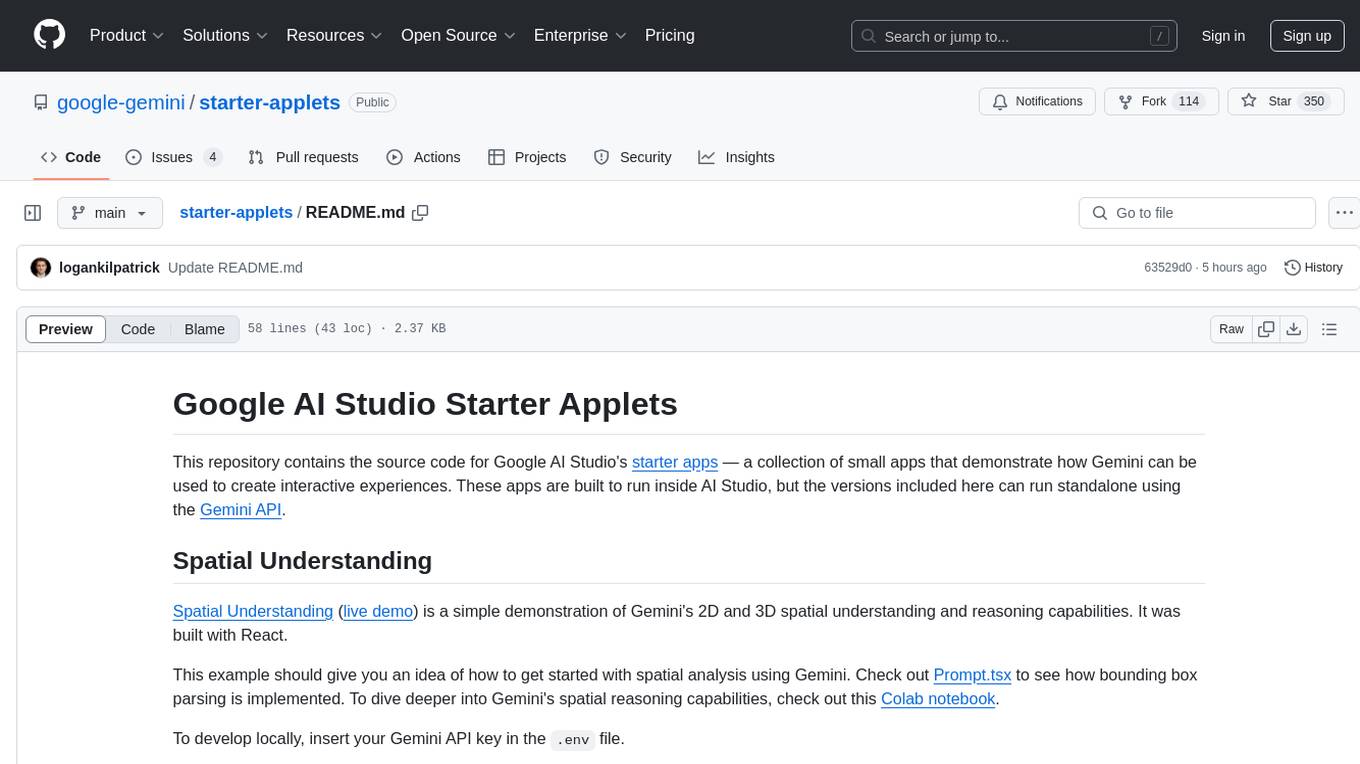
starter-applets
This repository contains the source code for Google AI Studio's starter apps — a collection of small apps that demonstrate how Gemini can be used to create interactive experiences. These apps are built to run inside AI Studio, but the versions included here can run standalone using the Gemini API. The apps cover spatial understanding, video analysis, and map exploration, showcasing Gemini's capabilities in these areas. Developers can use these starter applets to kickstart their projects and learn how to leverage Gemini for spatial reasoning and interactive experiences.

TRACE
TRACE is a temporal grounding video model that utilizes causal event modeling to capture videos' inherent structure. It presents a task-interleaved video LLM model tailored for sequential encoding/decoding of timestamps, salient scores, and textual captions. The project includes various model checkpoints for different stages and fine-tuning on specific datasets. It provides evaluation codes for different tasks like VTG, MVBench, and VideoMME. The repository also offers annotation files and links to raw videos preparation projects. Users can train the model on different tasks and evaluate the performance based on metrics like CIDER, METEOR, SODA_c, F1, mAP, Hit@1, etc. TRACE has been enhanced with trace-retrieval and trace-uni models, showing improved performance on dense video captioning and general video understanding tasks.
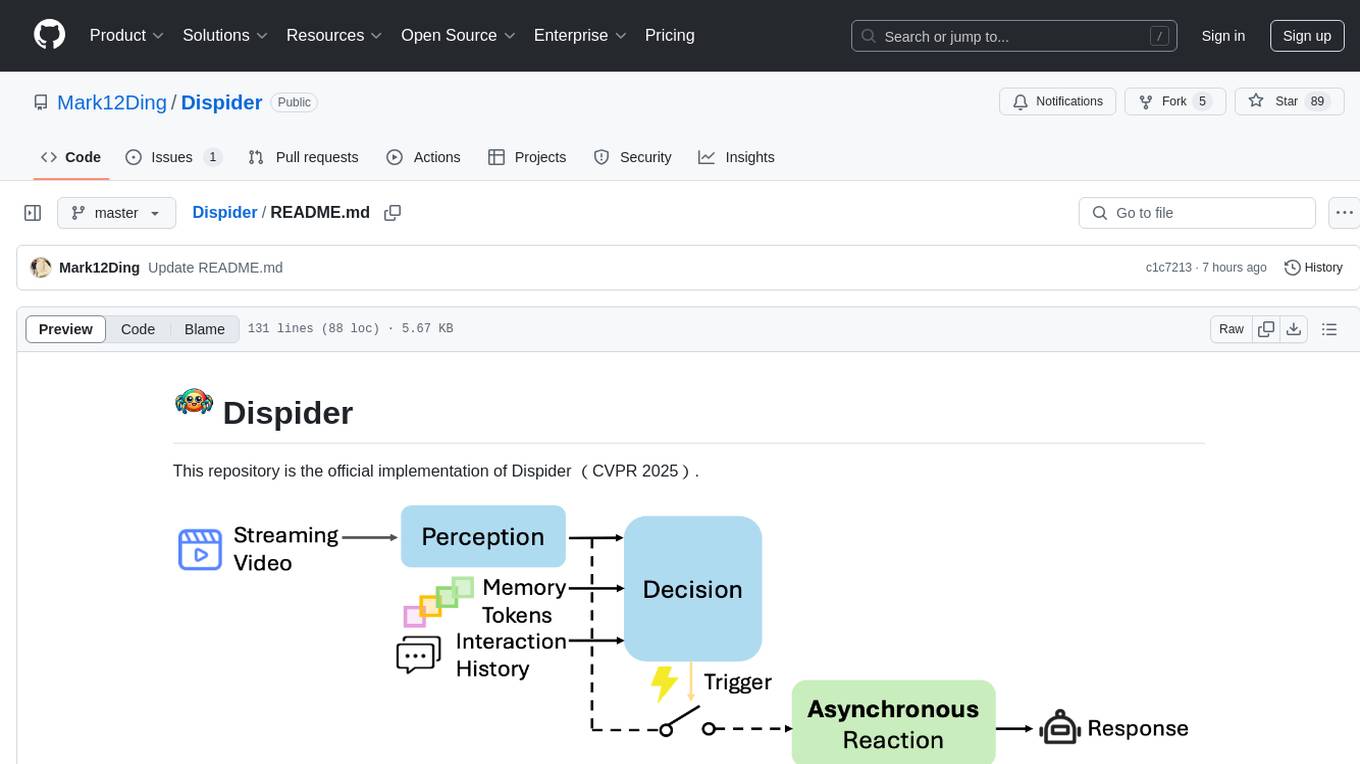
Dispider
Dispider is an implementation enabling real-time interactions with streaming videos, providing continuous feedback in live scenarios. It separates perception, decision-making, and reaction into asynchronous modules, ensuring timely interactions. Dispider outperforms VideoLLM-online on benchmarks like StreamingBench and excels in temporal reasoning. The tool requires CUDA 11.8 and specific library versions for optimal performance.
For similar jobs

weave
Weave is a toolkit for developing Generative AI applications, built by Weights & Biases. With Weave, you can log and debug language model inputs, outputs, and traces; build rigorous, apples-to-apples evaluations for language model use cases; and organize all the information generated across the LLM workflow, from experimentation to evaluations to production. Weave aims to bring rigor, best-practices, and composability to the inherently experimental process of developing Generative AI software, without introducing cognitive overhead.

LLMStack
LLMStack is a no-code platform for building generative AI agents, workflows, and chatbots. It allows users to connect their own data, internal tools, and GPT-powered models without any coding experience. LLMStack can be deployed to the cloud or on-premise and can be accessed via HTTP API or triggered from Slack or Discord.

VisionCraft
The VisionCraft API is a free API for using over 100 different AI models. From images to sound.

kaito
Kaito is an operator that automates the AI/ML inference model deployment in a Kubernetes cluster. It manages large model files using container images, avoids tuning deployment parameters to fit GPU hardware by providing preset configurations, auto-provisions GPU nodes based on model requirements, and hosts large model images in the public Microsoft Container Registry (MCR) if the license allows. Using Kaito, the workflow of onboarding large AI inference models in Kubernetes is largely simplified.

PyRIT
PyRIT is an open access automation framework designed to empower security professionals and ML engineers to red team foundation models and their applications. It automates AI Red Teaming tasks to allow operators to focus on more complicated and time-consuming tasks and can also identify security harms such as misuse (e.g., malware generation, jailbreaking), and privacy harms (e.g., identity theft). The goal is to allow researchers to have a baseline of how well their model and entire inference pipeline is doing against different harm categories and to be able to compare that baseline to future iterations of their model. This allows them to have empirical data on how well their model is doing today, and detect any degradation of performance based on future improvements.

tabby
Tabby is a self-hosted AI coding assistant, offering an open-source and on-premises alternative to GitHub Copilot. It boasts several key features: * Self-contained, with no need for a DBMS or cloud service. * OpenAPI interface, easy to integrate with existing infrastructure (e.g Cloud IDE). * Supports consumer-grade GPUs.

spear
SPEAR (Simulator for Photorealistic Embodied AI Research) is a powerful tool for training embodied agents. It features 300 unique virtual indoor environments with 2,566 unique rooms and 17,234 unique objects that can be manipulated individually. Each environment is designed by a professional artist and features detailed geometry, photorealistic materials, and a unique floor plan and object layout. SPEAR is implemented as Unreal Engine assets and provides an OpenAI Gym interface for interacting with the environments via Python.

Magick
Magick is a groundbreaking visual AIDE (Artificial Intelligence Development Environment) for no-code data pipelines and multimodal agents. Magick can connect to other services and comes with nodes and templates well-suited for intelligent agents, chatbots, complex reasoning systems and realistic characters.





